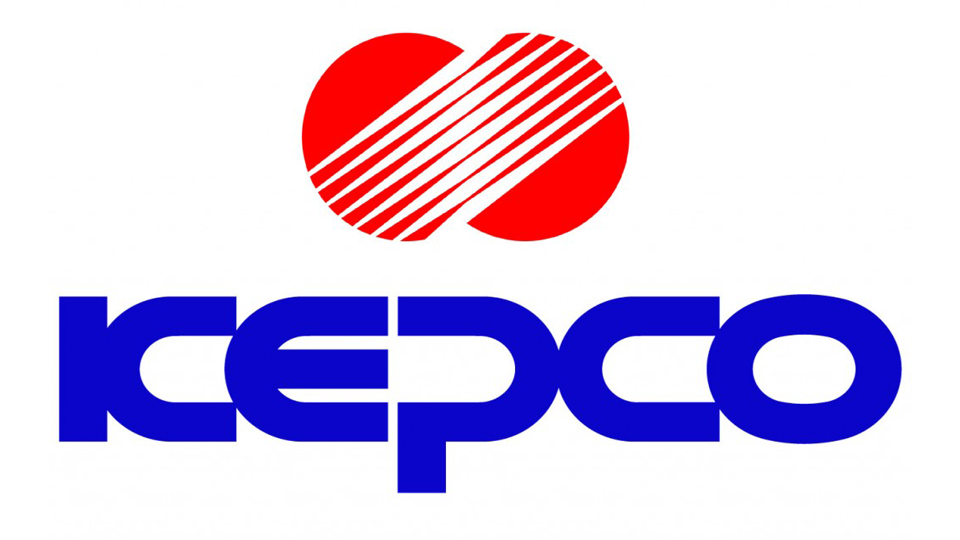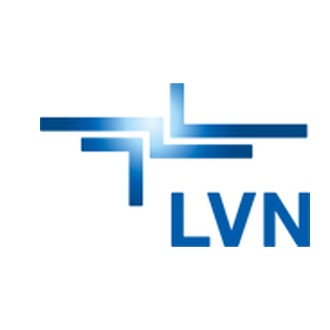Winner
| Project Title: Open Microgrid Project Organization: Korea Electric Power Corporation Country: Republic of Korea Website: http://home.kepco.co.kr/kepco/EN/main.do |
 |
| Project Title: Open Microgrid Project Organization: Korea Electric Power Corporation Country: Republic of Korea Website: http://home.kepco.co.kr/kepco/EN/main.do |
 |
The ‘Open Microgrid Project of Korea Electric Power Corporation (KEPCO)’ covers the construction and demonstration of two types of microgrids designed and operated by KEPCO: a consumer community-based independent microgrid (MG) and a grid-connected microgrid, involving different types of distributed energy resources such as renewable energy, ESS and etc. The project stemmed from KEPCO’s recognition of the importance of microgrid (MG) technology that can ensure reliability and resilience in energy supply while contributing to resolving energy production and consumption problems.
The main goal of the project was to build and test-operate optimally designed microgrids that can alleviate voltage variations and electricity quality issues deriving from intermittent renewable energy production as well as increasing distributed energy production in the grid following the Korean government’s ambitious plan to expand the renewable energy ratio to 20% of the energy mix by 2030, reaching 63.8GW in total installed capacity. Once completed, the project was expected to resolve the imbalance between power supply and consumption, maximize energy efficiency, increase electricity quality, ensure resilience, and to quickly respond to abrupt changes in the power grid and systems.
For the project, KEPCO developed distinctive engineering technologies for power source design, capacity design, and power system structural design to maintain renewable energy supply at a 100% level. In October 2014, after extensive evaluation, KEPCO selected Gasa Island in Jindo-gun, Jeollanam-do, located in the southern part of Korea, as its pilot location. Through the demonstration operation of a year-long project, KEPCO managed to successfully prove the possibility of reliable power supply, as well as power generation control, ESS control, and load control. The project showed more than 50% reduction in operating costs, improved power quality, and lower fuel costs, resulting in economic savings of approximately USD 3.7 million per year.
In addition, KEPCO built and test operated an active distribution grid (“utility MG”) that combined a next-generation distribution automation system with a grid-connected microgrid. This was to improve grid efficiency as well as the utilization rate of renewable energy. The pilot sites selected were grid-connected islands in Anjwa-myeon, Bigeum-myeon and Palgeum-myeon, where a distribution operation center and three grid-connected microgrids were established. KEPCO demonstrated its active distribution operation technology (voltage control, microgrid-based independent operation in case of emergency, active and reactive power control, etc.) and proved the feasibility of microgrid as energy resource and the increased utilization rate of renewable energy. Using these results and technologies, KEPCO demonstrated its active microgrid system with Alectra Utilities, which supplies power to the northern part of Toronto and central Ontario, Canada, between January 2016 and December 2017 at Penetanguishene. Through this long-term demonstration project, KEPCO earned a successful track record in the operating environment of the North American power distribution business, which is expected to further boost overseas exports including the North American market.
The core technologies acquired through this project, such as engineering, operating system, and operational performance, have already played a role in triggering the energy-independent microgrid project developments on domestic islands (Deokjeok Island, Ulleung Island, etc.). Furthermore, such endeavor has helped to lay the foundation for developing and enlarging overseas markets such as Africa, Canada, and Southeast Asia. The expansion of these businesses is expected to bring economic and social benefits by creating an ecosystem of microgrid-related industries and new job opportunities.
| Project Title: RIGRID – Rural Intelligent Grid Organization: ELECTRUM SP. Z O.O. Country: Poland Partner Organizations: Fraunhofer Institute for Factory Operation and Automation IFF Magdeburg, Warsaw University of Technology – Institute of Electrical Power, Europejski Instytut Miedzi, Copper Alliance, Harz Regenerativ-Druiberg e.V., Regenerativ Kraftwerke Harz GmbH Website: http://rigrid.pl/ |
 |
Integrated planning of renewable energy sources and flexible consumers incorporating technical, market and social factors presents major challenges to the establishment of a regional smart grid concept. The aim of the project ‘Rural Intelligent Grid’ was to develop and test a novel interactive energy and infrastructure design tool for the pro-integrative optimal planning and operation of new emerging energy infrastructures in rural areas. Following the motto of the ERA-Net Smart Grids Plus Initiative “from Local Trials towards a European Knowledge Community” RIGRID was implemented and demonstrated in rural regions in Poland and Germany. The project addresses all three research layers of the initiative such as technology, stakeholder and marketplace. The technical modules of RIGRID-tool include computer programs serving for the planning of optimal structures of newly designed AC low voltage microgrids finding the best corridors for power lines or cables and choosing the optimal site for installing distributed generation sources (DGS), renewable energy sources (RES) and battery storage systems. The optimal operation of the microgrid is realized within newly designed EMACS (Energy Management and Control System), which can monitor and control any processes related to generation, storage and use of energy from RES sources, as well as obtain data that will be used for business analysis. The RIGRID virtual reality-based design tool is used for interactive planning of infrastructure and testing various technical variants of the planned microgrid configuration. Thus the acceptance of the local community and groups of interest can be analyzed, which brings the discussion between stakeholders, local authorities and inhabitants to the level of facts, eliminates concerns, overcomes the socio-economic barriers and accelerates the decision-making process and implementation of planned investments.
| Project Title: Local Island Power Supply with Renewables in Case of Large-Scale Blackouts Organization: LEW Verteilnetz GmbH Country: Germany Partner Organization: University of Applied Sciences Augsburg, Technical University of Munich, LEW Wasserkraft GmbH, Stellba Hydro GmbH & Co KG, marquis Automatisierungstechnik GmbH, PSI AG, MTU Onsite Energy Website: www.Lew-Verteilnetz.De/Stromnetz/Netz/Aktuelle-Projekte/Pilotprojekt-Linda |
 |
The research project LINDA (German acronym for “Local Island Power Supply and Accelerated Grid Restauration with Distributed Generation Systems in Case of Large-Scale Blackouts”) developed a pioneering concept for the emergency power supply of critical infrastructures. It can minimize the macroeconomic consequences of long-term power outages and accelerate the grid restoration process. LINDA uses locally available renewable energy sources (RES) to build up a stable isolated grid – without additional communication technology. The project with its concept of integrating renewable energy for off-grid supply and the field tests in a real network are unique in energy research in Bavaria and Germany. LINDA provides an important element in the energy transition and security of supply.
| Project Title: Community Grids – Smart Virtual Microgrids Organization: Smart M Power Company Ltd Country: Ireland Partner Organization: South Dublin County Council SDCC, Micro Electricity Generation Association (MEGA) Website: www.Tallaghtsmartgrid.Com |
 |
The Community Grid project provides a solution to maximize production from renewable energy sources hosted by communities. A Community Grid is a local Smart-Grid virtual network of end-users, who use local marketplaces dedicated to Disturbance-free trading of energy and flexibility through smart contracts, purpose designed to provide disturbance-neutrality: the extent to which production disturbs the delivery of electricity to interconnected consumers at the point of sale (the meter). The ability to increase production without relying on grid upgrades, also reducing time and cost for grid connections, and its autonomous operation will accelerate distributed production to at least beyond 50% of all renewable production. The first experimental Community Grid is planned for 2019 in the Tallaght Smart Grid Test-Bed, which has been part of the project from the very beginning, and more advanced Community Grids are already in the pipeline.
| Project Title: Solar Energy Management Systems Smart Grid Pilot Organization: Oshawa Power and Utilities Corporation Energy Services Country: Canada Partner Organization: Tabuchi Electric Co., Ltd. Website: www.opuc.on.ca/solar-energy-management-system |
 |
The Solar Energy Management Systems (SEMS) Pilot is a first-of-its-kind, international smart grid initiative that seeks to prove new smart grid technologies while also drastically re-defining local demand response (DR) and the roles of residential consumers when it comes to energy management and climate change. The objectives and key outcomes of the SEMS pilot include 1) Market-testing new residential renewable energy systems that exceed the functionalities of existing technologies to advance industry knowledge regarding systems designed to optimize prosumer behaviors. 2) Designing and deploying cloud-based Supervisory Control and Data Acquisition-tied controls to unlock the first fully-functional tandem, remote deployment of SEMS. 3) Defining the market potential of SEMS in Smart Grid formats to unlock future Smart Grid opportunities across the globe.
| Project Title: IoT-Based Campus Microgrid Project at Seoul National University Organization: LSIS Country: Republic of Korea Partner Organization Seoul National University, KEPRI, FLK, LG Electronics, Nara Controls, Encored Technologies Website: www.lsis.com |
 |
‘IoT-based Campus Microgrid Project at Seoul National University’ is a project to develop a microgrid(MG) system for stable power supply and economical operation on campus. Our system can manage power production and consumption at the same time. Our project is an ongoing demonstration test at Seoul National University (SNU), the largest power consumption university in Korea (about 16 million US$). We set the ultimate goal of the project as developing a customized SNU campus microgrid model to provide 4 hours uninterruptible power supply to critical loads, 20% peak reduction and energy savings using big data platform and IoT technology. It is expected that the grid reliability by uninterruptible power supply and the economic efficiency by energy savings of the grid-connected microgrid will be improved.
| Project Title: City Of Summerside Mypowernet Organization: City Of Summerside Country: Canada Website: www.city.summerside.pe.ca |
 |
The MyPowerNet project is the creation of an electrical information network that connects consumer loads to the needs of the electrical grid while taking into account the environmental needs of incorporating more renewable energy sources to the electric energy portfolio of the utility. By creating a smart network of control, consumer loads can be coordinated with the variability of the renewable electricity sources of wind and solar. By controlling when the electricity is given to the consumer, without sacrificing the consumer’s services or lifestyle, the infrastructure of a smart grid can be beneficial to the three main stakeholders, those being the electric utility, the consumer, and the environment. For 8 years the City of Summerside has been expanding its smart grid to show that the utility can benefit, the consumer can benefit and the carbon footprint of the community can be reduced. By allowing the electric utility to choose when the electricity is needed, the utility can now use the smart grid to shape its load curve to match its grid electricity sources which creates a more stable, reliable, and resilient electricity grid while achieving the highest possible percentage of renewable energy that is highly variable.
| Project Title: MASERA: Microgrid for Affordable and Sustainable Electricity in Remote Areas Organization: EDF R&D Country: France Partner Organization: Enedis, Nanyang Technological University Website: www.youtube.com/watch?v=ERWA-zvDfG0 |
 |
EDF’s MASERA (with Enedis involvement) microgrid is part of NTU’s (Nanyang Technological University) offshore microgrid testbed known as REIDS (Renewable Energy Integration Demonstrator – Singapore) which is the region’s first offshore microgrid testbed. MASERA promotes a pre-commercial and innovative microgrid solution to support socio-economic development, energy demand increase and to address grid quality and reliability issues in South-East Asia, particularly in remote areas. MASERA aims to design, develop, test and promote an innovative and affordable microgrid solution based on three key objectives: Affordable, Sustainable and Reliable. This project illustrates EDF’s and Enedis’s drive and unique expertise in designing, developing and executing smart grid and microgrid projects on islands and territories with no access to the grid (off-grid) or facing reliability issues (bad grid).